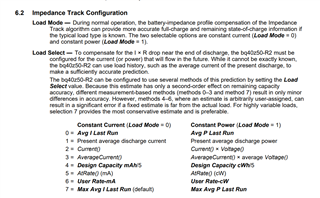Tool/software:
Hi there—our design uses the default values for the IT Gauging Ext and Load Select data flash parameters (0x001A and 7, respectively). Are there any conditions or use-cases for which customers are advised to change either of these parameters from their default values?
We are not experiencing any issues related to gauging at this time; I only ask because we have not given any consideration to these seemingly advanced parameters of the IT algorithm. In case I can provide any additional information, please let me know.



